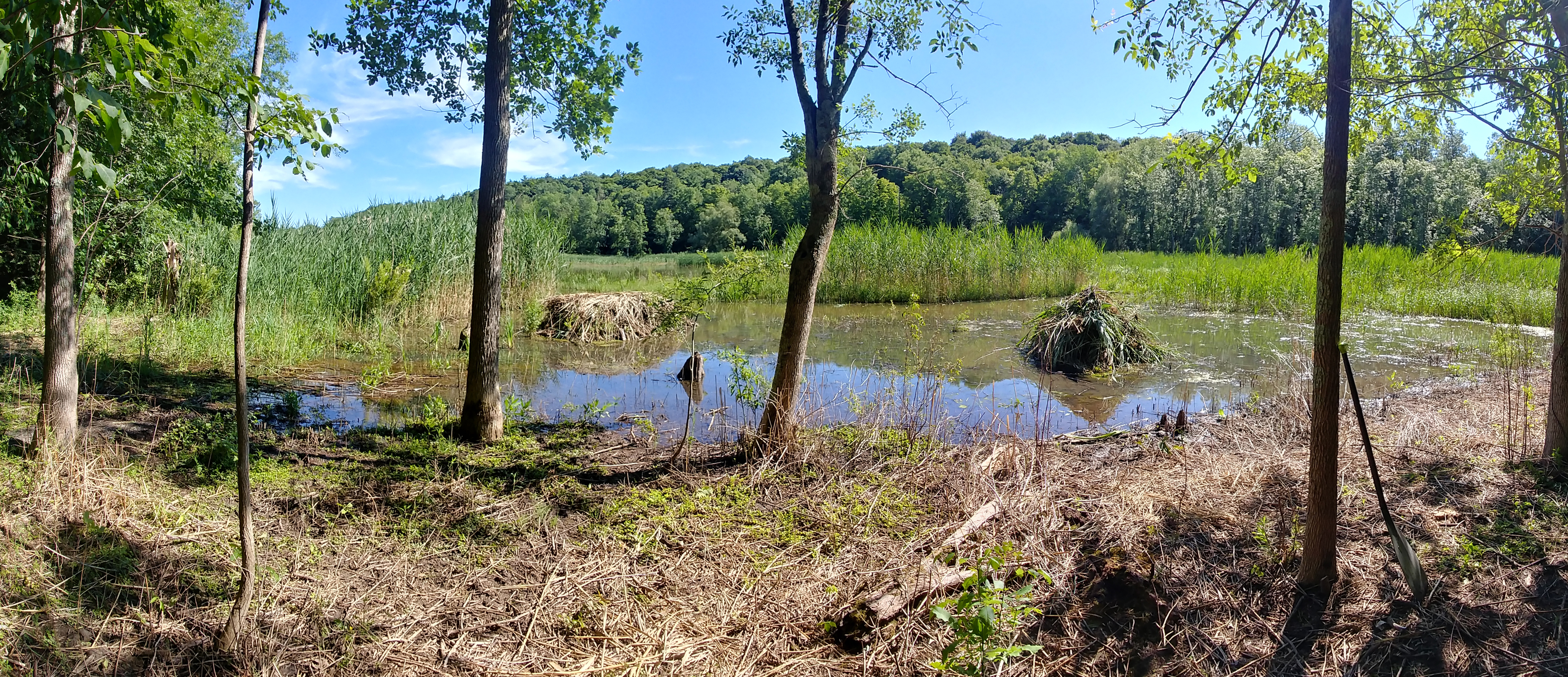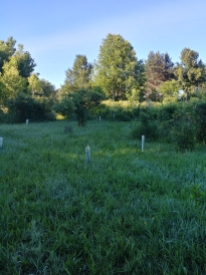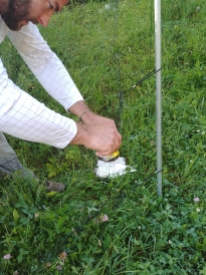When I first started volunteering at the Conservation Area, I sought direction from the SCA Advisory Committee, whose members strongly and repeatedly stressed that the Conservation Area is “not a park.” I took this to mean that it was not intended to be like a neighborhood park with playgrounds, large ball-fields and other lawns for sports. But I could have argued that the Conservation Area was already similar in many ways to a lot of places called parks. The SCA has features in common with some of our county, state, and even national parks. It has woods and streams, a waterfall, hiking trails, a picnic pavilion, a camping shelter, an artificially-maintained fishing pond, some ephemeral beaver ponds, boardwalks that traverse wetlands, and parking lots with kiosks that contain maps, information, and a place to sign in, like many of those parks have.
But I understood “not a park” to be sort of a code that indicated that they were seriously concerned that the area would become less of a “natural area” and that “conservation” would no longer be the primary function of the area. The problem is that those terms (“natural area” and “conservation”) mean different things to different people in different situations. Probably like many people, for most of my life, I would have considered a “natural area” to be one that is not maintained beyond the possible exception of keeping it accessible to the public (if even that’s desired). I just assumed that “nature” would take its course, and given a reasonable amount of time, any piece of land would become “natural” and stay that way unless humans interfered too much. But this can’t be argued one way or the other unless a common understanding of the word “natural” is agreed upon, or if that understanding turns out to be too broad, maybe an understanding of what kind of “nature” we prefer.
Any old farm field that is left on its own to “naturalize” in this part of the world will probably become a tangled mess of a limited number of exotic and invasive shrubs and vines. Many of of us can find beauty in that kind of “nature,” but the appreciation is strongly tempered by knowing that the nearly-impenetrable thicket is not a viable habitat for native wildlife and that the invasive plants threaten nearby more “pristine” areas that are more widely appreciated as “natural areas.” And many of us also find it harder to enjoy an area that can’t be walked through comfortably and where sight distance is limited to a few feet. Much of the wildlife that we enjoy and depend on seem to feel the same way too.
I would argue that, if we can avoid it, we should not allow the bulk of our conservation area to continue to become an exotic dense thicket. There are plenty of other abandoned agricultural fields that have or soon will become infested with dense and tangled exotic vegetation, in case you are looking for a place to hide. One problem is that when we remove the “exotic thickets,” they tend to grow back very quickly from their stumps and seed bank, often becoming even thicker than before, much as a privet hedge would do if we were to keep it well trimmed. In fact, one of our worst-offending invasives at the conservation area is the very same privet.
Another problem is that any native plants and trees that are released from the intense shade of the exotic plants are also made more prone to herbivory – rabbits, deer, and insects prefer the native plants that they evolved with. So, two problems prevent the exotic “thicket” plants from being replaced by native plants and trees that we would recognized as components of our preferred “natural area:” (1) continued re-sprouting of the exotic vegetation and (2) herbivory of the native vegetation but not the exotic stuff.
One obvious solution is to treat a “natural area” more like garden. Continuously remove or weed-out the invasives, and where necessary, protect the natives, especially the trees, until they get large enough to be safe from herbivore damage and provide some shade to slow down the invasives. This of course is quite labor intensive, and invasive plants vary as to how susceptible they are to cutting or pulling. Some invasive plants will continue to return year after year, and without chemical help, our only hope is to keep them from going to seed each year. Aside from the serious environmental concerns with using chemicals to control weeds, the SCA is public land, so uncertified volunteers are prohibited from applying any kind of pesticide, and volunteers cannot become certified without going through an extensive process of becoming a professional applicator (NYS-DEC-catch-22), so the application of any herbicide would be expensive. Often, the only practical method of control other than using herbicides is to keep the area mowed on a schedule that depends on which plants are present (both exotic and native).
Areas that we want to treat as meadow areas, with lots of grasses and sun-loving wildflowers like asters and goldenrod, are normally mowed about once every three years to prevent any trees or shrubs (native or exotic) from growing any higher than the herbaceous plants that we want to maintain. This somewhat replicates the occasional burning that was more common in the past, especially before European settlement. Invasive trees and shrubs like buckthorn and honeysuckle will eventually be kept in check by such a schedule, but mowing more frequently may be required the first few years after larger invasive shrubs are initially cut. Extremely-fast-growing invasive shrubs like autumn olive may need to be cut even more often. It is also recommended that fields be divided into strips or sections that are cut on alternating schedules to allow seeds from plants that mature at different rates to spread into sections that lack those seeds. The time of year selected for mowing is very important. Of special concern is avoiding mowing during bird-nesting season. Presence of invasive plants like pale swallowwort require that infested areas be cut several times a year to prevent seed pods from forming, to keep the swallowwort seed from being spread by the mower.
Mowing large areas repeatedly might be interpreted as making the area look more like a “park” than a “nature area.” And there are legitimate concerns about the air and noise pollution that a mower produces. Besides, mowed areas (lawns) are just not good wildlife habitats. They provide little benefit beyond providing a good surface to walk and play on and whatever aesthetic value they may provide. Any ecosystem services that a mowed area does provide are probably eaten up by the environmental costs of the act of mowing with power equipment, not to mention the fact that lawns are taking up space where a more ecologically productive crop might be. For these reasons, mowing beyond any desired walking and playing areas should be limited as much as possible, but it may be necessary in order to keep damaging invasives in check.













